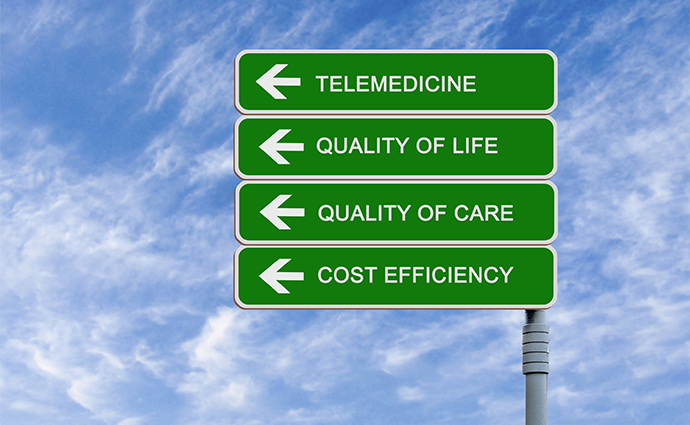Telehealth Payment, Access Flexibilities Can Help Close Care Gaps
A new report shows that telehealth could play a key part in mitigating health inequities, but payment structures and social determinants of health, like lack of broadband access, pose challenges.

Source: Getty Images
- There is no doubt that the COVID-19 pandemic exacerbated existing health inequities, widening the already large gap between the care that white and Black Americans receive. A new report from public analytics company Clarivate shows that telehealth could play a significant role in alleviating these disparities, but there are several hurdles in place, including current reimbursement structures and social determinants of health.
The difference in COVID-19 outcomes among Black and white Americans is staggering. Black patients are nearly three times as likely to need hospitalization once they have contracted the disease and twice as likely to die from it as compared with white patients, according to data from the Centers for Disease Control and Prevention.
Further, Black Americans are more likely to face social determinants of health issues that prevent them from accessing care, including not having a computer or broadband, the report states. This holds Black people back from using virtual care, a key form of care delivery amid the pandemic.
"The pandemic really highlighted the inequities that we have, both in the broader society and in healthcare delivery," said Dr. Denise White Perkins, director of healthcare equality initiatives at Detroit-based Henry Ford Health System, in a news release. "When we converted the majority of our visits to virtual care at the start of the pandemic, it became immediately obvious that there were certain segments of the population we were serving that did not have equal access, whether that was knowing how to use the technology or the more upstream issues of having broadband access in their neighborhoods."
Several studies have shown that telehealth can be effectively used to engage Black patients and increase access to care. For example, a systematic review of studies conducted in 2019 found a significant reduction of depressive symptoms among Black adults as a result of telehealth interventions, according to the report.
Further, telehealth usage among Black people appears to be on the rise. Black patients seeking care via telemedicine increased by 4.9 percent year-over-year in 2020, a study from New York University Langone Health showed.
Thus, policymakers, providers and life sciences companies must take steps to support advancements in telehealth infrastructure and reimbursement as a means to close health equity gaps, the report states.
Policymakers can support telehealth expansion in several ways, including making permanent policies that ensure telehealth services get reimbursed at the same rate as in-person care, including audio-only visits and consultations with out-of-state providers.
Further, they can invest in broadband infrastructure in underserved communities and determine ways to get devices like smartphones and tablets to patients who lack them.
Providers must also play their part, according to the report. Key steps for this group to take include providing telehealth training for staff, including cultural competency training to improve communication with patients from underserved communities, and partnering with local and national community groups, patient advocacy organizations and other stakeholders to establish trust and credibility among minority groups.
Life sciences companies can contribute to advancing care equity via telehealth by exploring ways to package digital information and resources that make them easy for providers to share with their patients during or after telehealth visits. They can also raise awareness of these digital resources among clinicians through websites and apps, and promotional content.
"The silver lining is that the pandemic allowed us to reimagine healthcare in those four-to-six months of the pandemic, and there was evidence that technology actually can allow us to bridge the gap in care when there is access," said Dr. Gbenga Ogedegbe, professor of medicine and population health at NYU Grossman School of Medicine and director of the Institute for Excellence in Health Equity at NYU Langone Health, in a news release.
